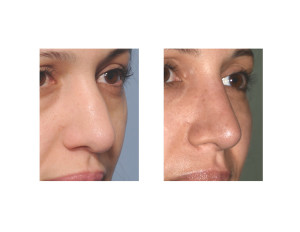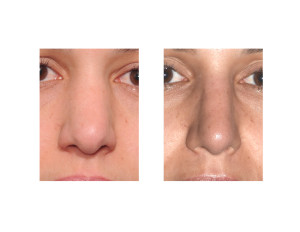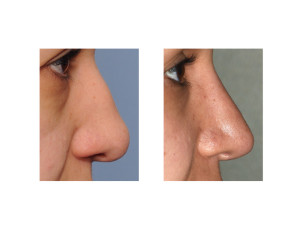Background: Rhinoplasty encompasses a wide variety of bone and cartilage reshaping techniques to change the external appearance of the nose. Bone and cartilage can be reduced in size or reshaped from its present form. In addition, a variety of autologous, allogeneic or synthetic grafts can be added to create nasal augmentative changes. But the one tissue which encompasses a large surface area of the nose that is not changed during rhinoplasty by any direct manipulation is that of the skin.
The soft tissue cover of the nose is composed of skin, fat and muscle that is collectively called the nasal skin. While anatomically inaccurate the use of the term, ‘nasal skin’, symbolizes the coverage of what lies underneath it. The overlying skin modifies the appearance of what lies underneath with a variety of effects from smoothing, revealing or even concealing many aspects of the nasal framework. Its most important characteristic in regards to rhinoplasty is its thickness.
Intermediate nasal skin thickness is the most ideal for rhinoplasty although that term can be hard to put a precise measurement to it. Conversely too thin nasal skin has scarring tendencies and too much of a ‘reveal’ to the nuances of what lies underneath it. In contrast, thick nasal skin does a much better job of concealing any imperfections/irregularities of the nasal framework. But the other side of this asset is that it takes a longer time after rhinoplasty to see the final result and, between the thick skin and the creation of scar tissue, the nose may never look as refined or reshaped as much as the patient would like.
Case Study: This 36 year old female wanted her nose reshaped to a more refined and feminine appearance. She had an ‘ethnic’ nose with a prominent hump, a thick and wide tip and a less than 90 degree nasolabial angle due to its ‘heaviness’ and size.


Thick nasal skin poses challenges to obtaining a more refined and smaller nose. With enough time and patience an improved nasal shape will occur. But it may not turn out to be as refined as some patients will like. This is most evident in the nose which can still end up under rotated. A secondary revision rhinoplasty can help obtain further improvement for further tip rotation and deprojection.
Highlights:
1) One of the strongest influences on the aesthetic results of a rhinoplasty is the thickness of the patient’s skin.
2) Contraction of thick nasal skin over a reshaped osteocartilaginous nasal framework takes many months after surgery to see the final result.
3) The nasal tip is the primary area of the nose where the influence of thick skin poses the greatest aesthetic challenge.
Dr. Barry Eppley
Indianapolis, Indiana



